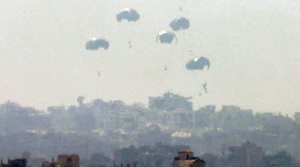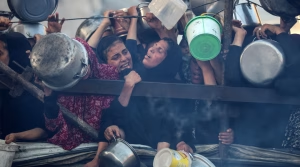Oct. 18 holds no special significance for most of us. Autumn has arrived. The melancholy of seeing leaves fall away, marking the transition from warmer weather to cooler times ahead, is abated somewhat by the splendid, fiery display of the leaves, before they disappear for another year.
However, 45 years ago, on Oct. 18, far from the crisp, autumn climes of Canada, the soldiers of the Israel Defence Forces were fighting to save the very existence of the young Jewish state. It was the 12th day of the war that had been launched against it on Yom Kippur.
On that day, Israeli forces were finally consolidating military gains on both the southern (Sinai and the Suez Canal) and northern (Golan Heights) fronts. Two days earlier, an IDF paratroop unit under the command of Ariel Sharon had crossed onto the west side of the Suez Canal. Despite furious efforts by the Egyptians to dislodge the Israeli bridgehead, some 36 tanks were able to trundle across the canal, marking the ultimate turning point in the war against Egypt. In the Golan Heights, the IDF had stopped the Syrians from marching toward the heartland of the country and were now preparing for the fateful final assault, which would take place four days later, to recapture Mount Hermon, the “eyes of Israel,” as one soldier poignantly described it.
The ceasefire that ended the war came into effect on Oct. 25, after it became clear to the Egyptian and Syrian generals – and, especially, to their manipulative, mischievous Soviet underwriters – that the Arab armies stood on the brink of annihilation.
Israel had been at war, fully mobilized, literally in a life-and-death struggle against overwhelmingly larger numbers, for 19 days. The remarkable self-sacrifice and heroism of the men and women of the tiny country ultimately overcame the now well-documented prewar failures of some of its political and military decision-makers.
The losses in the war were staggering. Israel suffered 2,500 dead and thousands wounded. Egypt lost over 15,000 soldiers and Syria lost almost 5,000. The societal, political, psychological and emotional scars of the war still hurt and course jaggedly through the country to this day.
After the war, Israel’s enemies changed their tactics, if not their aims, regarding the Jewish state.
No Arab country has entered into a war with Israel since then. Instead, they hired, trained, directed and equipped proxies (terrorists and terror organizations), to fight and harass the Jewish state. The end of the Yom Kippur War also marked a topsy-turvy, morally inverted norm of international behaviour toward Israel that exists to this very day. In solidarity with the Arab states that had launched, but lost, the war, most African countries severed diplomatic ties with Israel. That pattern has repeated ever since. When Israel takes measures to defend itself against its enemies, much of the international community turns against it. Every manner of vile calumny is hurled against Israel in political and legal forums when it fights back against the violence initiated by others and aimed at its citizens.
In the intervening 45 years since the Yom Kippur War, nearly two generations have been born who have only read – if they are aware at all – of how close Israel came to destruction.
READ: BEN-DAT: INSIGHTS AT DAWN, LESSONS FOR A BETTER WORLD
It is important that these generations know the truth about that war. In his book, War of Atonement, Chaim Herzog, the former president of Israel, wrote of “the inherent strength and resilience of the people of Israel … in the stark, grim and tragic days at the outset of the war, when, fighting back against overwhelming odds, they overcame the initial setbacks and achieved military success.… No people in the world crave for peace more than the people of Israel and yet none are more ready for self-sacrifice should the necessity arise.”






